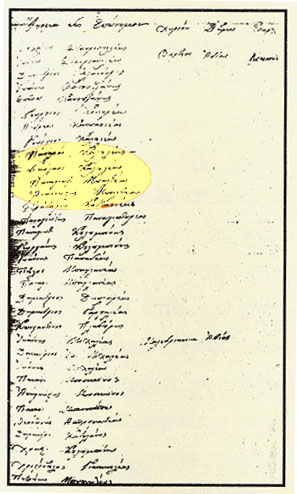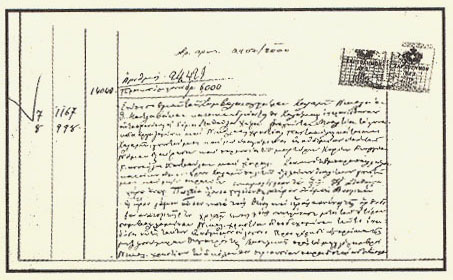 |
|
|
A Brief History of the Balteas Family from Stavropigi of Exo Mani and Messinia, to Varousi in Lakonia |
|
|
By Aris Poulimenakos, genealogist, and Nikos Balteas Foreward by Donald George McPhail, Editor of Mani: Yesterday, Today, Tomorrow Translation and notes by Mary Papoutsy The original article appeared in Greek in the May-June issue (Volume 10) of the magazine Mani: Yesterday, Today, Tomorrow. Posted to HCS with permission of the editor. Continued from Page One Thus, from the document of 1809 we deduce that "Balteas" wasn't formed straightaway with the ending "-eas," as were other chiefly patronymic surnames like, for instance, "Vasil-eas," but had continued to exist with the older Maniot ending "-akis" as "Baltakis." At any rate, it had existed up until 1809. That is to say, it had existed up until the time when we found it recorded by an educated person of that era who was a descendant of that same genealogical line. Figs. 3 and 4 (left and right, respectively) In the middle of one page of signatures (Fig. 4), depicted above right, we note the following names: Anagnostis balteas (1st), p. balteas (2nd), G. palteas (3rd), Dimitrios balteas (4th), and Georgios balteas (5th). As to the surname Palteas, especially of 1893, one could hypothesize that it was the result of a declension5 prior to Katharevousa6 of the particular notary who wrote it. The substitution of a "b" [μπ] for a "v" [β] or a "p" [π] has been a known [linguistic] custom [throughout Greek history]. More probable, however, especially in the document of 1850 with the autographs of the signatories, is that Palteas is correct and older than Balteas [based upon the above-mentioned linguistic custom].
6 Katharevousa is a more formal, puristic form of Greek common in 19th and early 20th century documents. Grammatical rules and structure are more complex than the more modern Dimotika, making Katharevousa more closely related to Ancient Greek. |
|
|
|




